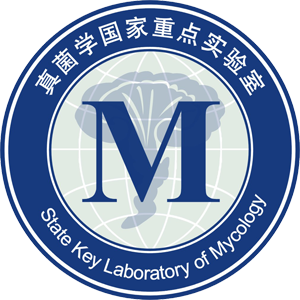
Director: Xingzhong Liu
Deputy Director: Fengyan Bai, Liangdong Guo
Research areas: (1) Fungal resource research platforms including culture collection, herbarium, metabolites and gene libraries and databases; (2) Biodiversity, systematics and evolution of fungi; (3) Community and ecological function of fungi and their interactions with other organisms; (4) Genetics and molecular mechanisms of morphogenesis and pathogenicity of fungi; and (5) Fungal chemistry, bioactive metabolites and their biosynthesis pathways and regulation.
Research team The laboratory hosts 74 faculty and staff belonging to 18 research groups. Among the faculty, 3 are CAS academicians, 3 are winners of the “National Science Fund for Distinguished Young Scholars” . 116 graduate students and 12 post doctor fellows are studying and working in the laboratory.
Research progress
Fungal diversity, systematics and evolution. A total of two new classes, 1 new genara and 47 new species were described. Systematic studies on the genera Umbelopsis and Circinella (Mucorales) from China have been completed. Taxonomy and molecular systematics of fungi in Hypocreales, Helotiales and Pyronemataceae were carried out. “Database of the Chinese Fungicolous Ascomycetes” were established and available to the public, and《Species Catalogue of China ? Cup-fungi》was finished.《Sylloge Fungorum Sinicorum vol. 48 Pyronemataceae》was published.To enable the unambiguous application of the name of Paecilomyces hepiali, a neotype was designated based on a recent collection from the type locality after both morphological and molecular studies. We provided strong evidence for a Far East Asian origin hypothesis of lager yeast. The preliminary investigation revealed a high species diversity of pathogenic and endophytic fungi from tea tree. Four diagnostic protocols for the quarantine fungi were developed,including one approved national standard protocol.
Fungal community and ecology. Comparative genome and transcriptome analyses of Hirsutella minnesotensis provided comprehensive understanding of the origination and infection mechanism of the fungus against the nematodes. The multiple gene loci analyses of the Chinese cordyceps demonstrated that both historical and contemporary events have played important roles in the phylogeography and evolution of the Ophiocordyceps sinensis and its insect host. The community assembly of ectomycorrhizal fungi along a subtropical secondary forest succession and the responses of arbuscular mycorrhizal (AM) fungi to nitrogen (N) addition in an alpine meadow on the Tibetan Plateau. A new way of doing R & D of lichen resources and a provisional drought–resistant gene from a lichenized fungus for transgenic plant
Fungal genetics and molecular biology. We reported a novel morphological form in C. albicans, referred to as the “gray” phenotype, which forms a tristable phenotypic switching system with the previously reported white and opaque phenotypes. The coordinative behavior between different cell types and its trade-off role in sexual and pathogenic lifestyles in C. albicans was studied. Target genes of white collar-1 and its regulation mechanism on the fruiting body development in Cordyceps militaris were studied. We elucidated glycolytic pathway plays an essential role in apoptosis and autophagy induced by fungal secondary metabolites. The maturation of protein precursor in Aspergillus fumigatus was found to be involved in the N-glycan processing, which reveals a novel mechanism of the protein secretion and maturation. A novel transcription factor CCG-8, that regulates transcriptional responses to antifungal azoles, was identified and its mechanism was revealed.
Fungal secondary metabolite and regulation. The chemical investigations on 8 edible and medicinal mushrooms, 114 compounds were isolated, which indicated the great potential of edible and medicinal mushrooms as a promising source of novel bioactive agents. We characterized the first PfZipA protein which regulates secondary metabolism and oxidative stress response in a plant endophytic fungus Pestalotiopsis fici. Disruption of Acatg1 significantly increased cephalosporin production through retaining the isopenicillin N synthase PcbC of Aremonium chrysogenum.
website:![]() State Key Laboratory of Mycology
State Key Laboratory of Mycology